Table of contents
We know pumpkins in many different colors and shapes. The most popular winter pumpkins include the butternut squash , the Hokkaido pumpkin , and the nutmeg pumpkin. The patty pan, a summer squash , is also very popular. Many pumpkins can also be eaten raw .
Use in the kitchen:
Depending on the variety, a pumpkin tastes nutty, sweet, sour or spicy. Be careful with bitter-tasting pumpkins. These should not be eaten raw or cooked, as they contain poisonous bitter substances called cucurbitacins.
Various pumpkins can be used to prepare popular autumn dishes, but many types of pumpkin also enrich the menu in summer. The zucchini (or more rarely, the zucchino), a summer squash, is a good example of this.
Vegan pumpkin recipes:
Here only in short form:
Vegan recipe 1: It doesn't always have to be cooked pumpkin in a pumpkin soup or pumpkin pastry . Some pumpkins are just as tasty raw. Pumpkins can be used to make a delicious, colorful autumn salad , smoothie or refreshing cold soup.
Vegan recipe 2: Butternut squash is ideal for making juice because it is particularly aromatic. Butternut squash is a large, flat pumpkin with a dark green or light brown skin. The ripe flesh and smell of a butternut squash are reminiscent of a sweet honeydew melon.
Vegan recipe 3: Alternatively, you can juice the smaller Hokkaido pumpkin, and eat the skin too. A pumpkin smoothie goes well with carrots , ginger or cinnamon .
Vegan recipe 4: Pumpkin puree is suitable as a dip or as a pumpkin spread. Season the puree with a littlepepper , salt and some spices such as dill or coriander . The subtle acidity of balsamic vinegar , lemon or lime also goes particularly well with a pumpkin spread. A spoonful of honey rounds off the fruity taste.
Vegan recipe 5: Pureed pumpkin makes a delicious pumpkin pesto. To make it, mix pumpkin, pumpkin seeds, garlic and a little oil with salt and pepper. If necessary, you can sauté the pumpkin, seeds and garlic shortly beforehand. Filled into screw-top jars, the pesto will keep in the fridge for at least 1-2 weeks.
Vegan recipe 6: A raw vegetable salad with pumpkin is quick to prepare. The aromatic Hokkaido pumpkin is best. If you grate the vegetables as finely as possible, the aroma will develop even better. You can add whatever you like to the salad, e.g. an apple and a vinaigrette made from fresh chili , vinegar and garlic. A little sugar , salt and pepper complete the aroma. We show other vegan pumpkin recipes - in the (vegan) recipes.
Summer squashes taste excellent in combination with coconut , as in this pumpkin salad .
| Not only vegans or vegetarians should read this: Vegans often eat unhealthily. Avoidable nutritional mistakes . |
Shopping - where to buy?
The best times to buy winter squash in the northern hemisphere are October and November. Supermarket chains such as Coop , Migros , Denner , Volg , Spar , Aldi , Lidl , Rewe , Edeka , Hofer etc. usually offer winter squash from September to December. Summer squash , which includes patty pan squash, spaghetti squash and zucchini, can be found from summer and then, depending on the variety, almost all year round. During the season, pumpkins are also very popular at weekly markets and in organic shops.
Prefer organic products (organic quality), as pumpkins can absorb certain contaminants (e.g. the insecticide dieldrin) from the soil.
When buying pumpkins, you should pay attention to the degree of ripeness. Fully ripe specimens promise the best aroma. Ripeness can be easily determined by the color and size of the vegetable. The skin becomes darker as it ripens and can be smooth or dimpled, but should not have any cracks. Smaller specimens usually have less fibrous flesh.
If the sound when you tap the pumpkin sounds hollow, that's a good sign, especially if the stem is slightly dried out but otherwise intact. The pumpkin is then ripe. If the stem is missing, the pumpkin should stay on the shelf, as this could allow putrefying bacteria to penetrate the pumpkin.
Popular pumpkin varieties:
- Hokkaido : a round, bright orange pumpkin weighing 0.5-3 kg. The skin can be eaten when young, but is removed before consumption. It is particularly suitable for soups or baked as a side dish.
- Butternut : a beige, elongated pumpkin weighing 1-3 kg. The aroma is sweet and nutty with firm flesh. The butternut is very suitable for baking.
- French Berry : is a green gourd with very few seeds. It weighs 2-4 kg. It is very versatile in the kitchen and its smooth skin is easy to remove.
- Spaghetti : The name comes from the spaghetti-like flesh that is produced when cooked. The whole or halved pumpkin can be boiled in salted water or baked in the oven. The flesh can then be easily scraped out and enjoyed.
- Red Zentner : is a decorative, bright red pumpkin with an impressive weight of 5-7 kg. Since it contains a lot of water, it is ideal for pumpkin vegetables or jam.
- Muscat (Muscade de Provence): weighs between 7 and 20 kg, which is a bit much for a normal household. But it tastes excellent and has very nice flesh. You can often buy it sliced.
- Longo di Naples : is a 10-25 kg pumpkin. The flesh is very firm and orange in colour. Its size makes it ideal for gastronomy and it is used in soups, savoury dishes and desserts. It is sometimes also found sliced.
Found in the wild:
Wild pumpkin varieties are not suitable for consumption. By selecting non-bitter varieties, it has become possible to use them as vegetables, while all wild varieties have bitter fruits.
Even in home-grown varieties, mutations or backcrossing can lead to the formation of bitter substances that were once present. In addition, a long dry period can lead to stress in pumpkin plants, which causes the plants to revert to "old patterns" and therefore produce bitter substances (cucurbitacins) that are harmful to the intestines. In severe cases, eating wild pumpkins can even lead to death.
Cucurbitaceae that grow wild in Europe include bryony ( Bryonia ) and the squirrel cucumber ( Ecballium ), but both genera bear little resemblance to the pumpkins we know. 1
Storage:
The stem must remain attached to the pumpkin for storage. If kept in a cool, dry place, it will last for months. It is best to store pumpkins in the vegetable compartment of the refrigerator or in a cool, dry cellar. It is important to store the pumpkins individually, as touching them can cause rot to form and spread more easily. It is best to place the pumpkins on straw or wood wool.
Pumpkins harvested in autumn are very sensitive to cold, which is why they should not be stored for long at temperatures below 10 °C. A week of ripening immediately after harvest at +15 to +21 °C improves shelf life. Alternaria rot ( Alternaria tenuis ) or black rot ( Mycosphaerella citrullina ) can occur in particular. Increased air humidity (> 75%) counteracts cold storage damage caused by Alternaria. 2
If the pumpkin has already been cut, it will keep in the fridge for about three to four days if wrapped in cling film. Pumpkin flesh can be frozen well, however. However, this will cause a loss of quality, so it is better to cook it or make it into chutney. The quality will be slightly better if you blanch the pumpkin flesh in boiling salted water for about one to two minutes before freezing and then cool it quickly in ice water.
Ingredients - nutritional value - calories:
Pumpkin owes its orange color to the beta-carotene or carotenoids it contains. α- and β-carotenes are among the most important representatives of carotenoids, which have an antioxidant and cancer-protective effect. Around 10% of carotenoids have provitamin A properties, with β-carotene having the highest vitamin A activity. The absorption rate of carotenoids is between 2 and 50%. 3
Depending on the variety, pumpkins contain around 426 µg/100g (butternut: 532 µg) of provitamin A, which our body converts into vitamin A. Raw carrots also contain a lot of it, at 835 µg/100g. Green plants such as small sorrel also have a high vitamin A content: 1250 µg/100g. 4
In addition to beta-carotene, the orange-yellow carotenoids zeaxanthin (not zeaxanthan) and lutein are present. Zeaxanthin is always accompanied by the isomer lutein. However, the highest amounts are not found in pumpkins, but in dark green leafy vegetables such as kale (8200 µg/100 g) or spinach (12200 µg/100 g). The content of the two carotenoids is significantly lower in butternut squash (290 µg/100 g). 4
Zeaxanthin and lutein are found as pigments in the retina, particularly in the macula lutea , and act as a filter to protect the retina from excessive light exposure. Zeaxanthin is becoming increasingly interesting in medicine because it may have a protective effect on certain forms of retinal degeneration, particularly age-related macular degeneration (AMD). This is based on the antioxidant effect of the oxygen-containing carotenoid. In plants, zeaxanthin plays an important role in the conversion of light into heat and thus protects the plant from damage caused by high radiation intensity.
The addition of fat as well as chopping or cooking increases the bioavailability of carotenoids. Just one minute in steam is enough to dissolve the fat-soluble micronutrients from the complexes and make them absorbable. 5
Also worth mentioning about pumpkin is its content of vitamin C , potassium , folate and certain B vitamins as well as its low calorie content of around 26 kcal/100g. 4 Thanks to its high fiber content, pumpkin is very filling.
Health aspects - effects:
Why are pumpkins so healthy? Pumpkins have digestive and stomach-soothing properties due to their alkaline minerals and high fiber content. The carotenoids and vitamin C they contain have an antioxidant effect and can help strengthen the immune system and protect against cancer. Thanks to the high potassium and low sodium content, regular consumption of pumpkins can lower blood pressure and help with cardiovascular diseases (while maintaining a healthy diet, of course). 6 Pumpkins contain many other secondary plant ingredients such as alkaloids, other flavonoids and monounsaturated fatty acids, which are said to have anti-inflammatory and antidiabetic effects in addition to antioxidant effects. 7
Dangers - Intolerances - Side effects:
In rare cases, pumpkins can taste bitter. These should be thrown away and not consumed to avoid falling victim to food poisoning. The bitter taste is caused by the poisonous bitter substances cucurbitacins, which attack the stomach and intestinal mucosa. Since cucurbitacins are heat-resistant and hardly soluble in water, they remain intact when cooked.
Descendants of crosses between ornamental and edible pumpkins can contain cucurbitacins. Spontaneous back mutations can also cause the bred-out poisons to suddenly reappear in cultivated pumpkins. Environmental stress, i.e. heat, temperature fluctuations, wet-dry fluctuations, fungal infections of wet plants, as well as overripeness and incorrect storage can sometimes lead to increased levels of cucurbitacins in pumpkins, zucchini, melons and cucumbers.
The bitter taste of cucurbitacins is perceptible at very low concentrations (the taste threshold is 10−6 mol/l). These show a strong laxative and, in the laboratory, diuretic, hypotensive and antirheumatic effects.
Use as a medicinal plant:
The parts of the pumpkin plant used as medicine are limited to the seeds. Pumpkin seed oil andpumpkin seeds , as well as medicines made from them, are traditionally used to strengthen bladder function in cases of bladder weakness. These pumpkin substances also have a soothing (but not healing) effect in cases of irritable bladder and problems with urination - caused by benign prostate enlargement. 8
In 2005, the study group " Development History of Medicinal Plant Science " at the University of Würzburg named the garden pumpkin, which is another type of pumpkin alongside the giant pumpkins, as medicinal plant of the year.
Occurrence - Origin:
The original domesticated form of the pumpkin, Cucurbita pepo, dates back to the time of the inhabitants of the caves of Guilá Naquitz in the province of Oaxaca (not Oxaca), Mexico (ca. 8000 BC). 13,14 Other pumpkin finds come from Tikal (Guatemala, 2000 BC to 850 AD) and from Peru (3000 BC). The musk pumpkin was domesticated in Central America and the giant pumpkin in South America. 15 In the 19th century, cultivation is documented in India, Java, Angola and Japan. The Spanish brought the pumpkin to Europe. It is assumed that people originally specifically used the nutritious seeds because they are free of bitter substances.
Pumpkin cultivation locations range from hot, dry areas to cool cloud forests. However, most species grow in hot lowland areas with distinct rainy and dry seasons.
Cultivation - Harvest:
Pumpkins are easy to grow in temperate zones. Seeds are sown from April to mid-May under glass. After 14 days, they are planted at a distance of 1.5 mx 0.75 m to 1 m - depending on the variant.
Pumpkins are heavy feeders, but easy to keep if you fertilize and water them enough. They also need a sunny location. To harvest larger fruits, you have to control their growth. To do this, cut off the main shoot after the fourth side shoot and after flowering, remove the tips of the side shoots. If you don't let more than 8 fruits ripen per plant, they will reach a nice size. 9
Pumpkins are not very demanding as a field crop either. All they need is weed-free soil, green manure, organic manure and a layer of mulch to prevent mold. For conventional fruits, disinfected calcium cyanamide is used to prevent mildew. Commercial farmers should note that pumpkins have a very short flowering period and are dependent on the weather. If there is no pollination by bees and bumblebees, harvest quantities can fluctuate considerably. 10
Tradition - "The Jack O'Lantern Pumpkin":
The tradition of putting up pumpkins for Halloween comes from Ireland. According to legend, the villain Jack Oldfield once lived in Ireland. On the evening before All Saints' Day, he used a trick to catch the devil when he wanted to take his soul with him. Jack would only release him if the devil promised him freedom for his soul. When Jack later died, he was not allowed to go to heaven because of his actions. But he was also barred from hell because the devil had promised never to take Jack's soul. So the devil sent him back to where he came from. So that he could walk through the darkness, the devil mercifully gave him a glowing coal from the fires of hell. Jack put it in a hollowed-out turnip that he had with him. The origin of the illuminated pumpkin was therefore an illuminated turnip. Since there were more pumpkins than turnips available in the United States, people there hollowed out a pumpkin instead of a turnip. This pumpkin has since become known as Jack O'Lantern. To scare away evil spirits and the devil, people carve faces into pumpkins on All Saints' Day and use them to light up their houses and yards.
General information:
Today, five types of pumpkin are cultivated: Cucurbita argyrosperma , fig leaf pumpkin ( Cucurbita ficifolia ), giant pumpkin ( Cucurbita maxima ), musk pumpkin ( Cucurbita moschata ) and garden pumpkin ( Cucurbita pepo ). Pumpkins also thrive in the sand of coastal dunes and in waterlogged lowland or gravel soils, but they require high levels of sunlight.
The five types of pumpkin used in gardening are divided into winter and summer pumpkins, depending on when they are harvested. Most summer pumpkins belong to the very diverse range of garden pumpkins. For example, Halloween pumpkins, spaghetti pumpkins, zucchini, patissons, rondini, oil pumpkins and the inedible ornamental pumpkins are all summer pumpkins. However, the definition of pumpkin varieties, or their classification into summer and winter pumpkins, does not always correspond to established standards. For example, many German-language sources list the spaghetti pumpkin as a summer pumpkin, while in English-language articles it is classified as a winter pumpkin.
Is the pumpkin a vegetable? Botanically speaking, pumpkin fruits are berries, i.e. fruits. However, they lack sweetness and fruit acid, which is why they are classified as fruit vegetables. They can reach a weight of up to 30 kg. Pumpkins are usually yellow to orange, oblong or round in shape with a diameter of 15 to 40 cm. Other colors and shapes are possible. 11 Vegan pumpkin recipes are increasingly in demand.
Alternative names:
Wikipedia gives the following common names in German: The other German-language common names also exist or existed for the giant pumpkin and the garden pumpkin, although no distinction is made between the two types: Bäbenen, Bebirna (Old High German), Chörbse (St. Gallen), Churbez (Middle High German), Churbiz (Old High German), Corbess (Middle High German), Corbicz (Middle High German), Corbs (Middle High German), Couwörden, Curbiz (Old High German), Fläschen (Altenahr, Hunsrück), Flaskenappel (East Frisia), Kerbes (Transylvania), Kirbes (Middle High German), Kirbis (Middle High German), Kirbs (Middle High German), Kirns (Eifel near Bertrich), Körbis, Körbitzen (Magdeburg Bible of 1578), Körbs (Mecklenburg, Pomerania), Körwitz (Hamburg), Korbes (Middle High German), Korbess (Middle High German), Korbis (Middle High German), Korbiz (Middle High German), Korvase, Korvese, Korvesege, Korvesen (Lübecker Bibel), Korwicze (Middle High German), Koyrbiss (Middle Low German), Kreps, Kürbeiz (Middle High German), Kürbis (Middle High German), Kürbiss (Middle High German), Kürbs (Rhine), Kurbisch (Middle High German), Kürbis (Middle High German), Kurbiss (Middle High German) and Kurbiz (Middle High German), Kurbsch, Kurbesa, Kurbeta, Kyrbs (Middle High German), Kyrbss (Middle High German), Kyrpss (Middle High German), Malune (St. Gallen, Bern), Plutz, Plutzer (Austria) and Torkappel (Altmark). These are not always butternut squashes or pear squashes and probably not always musk squashes either. 12

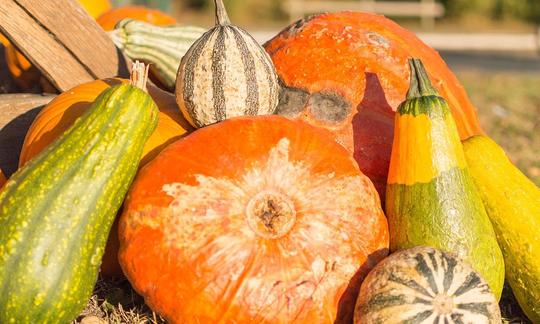

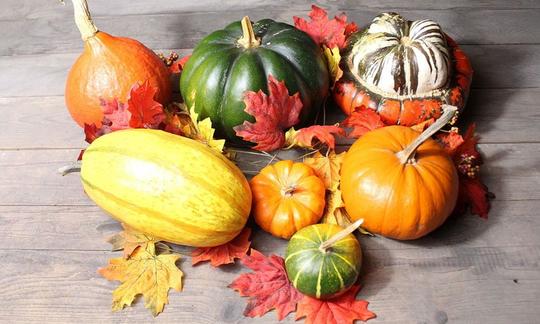

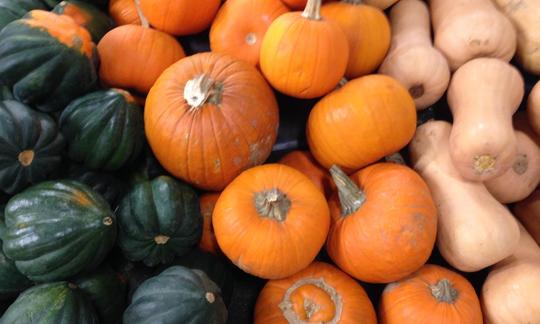

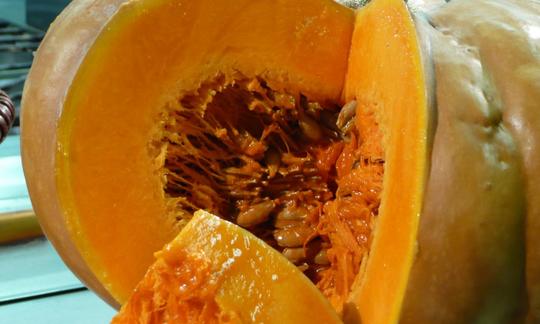

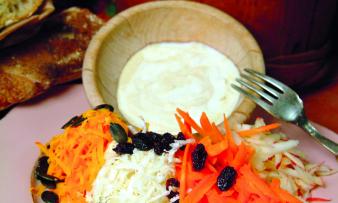





Comments